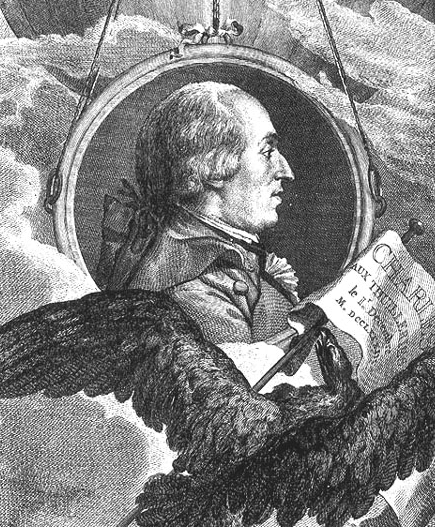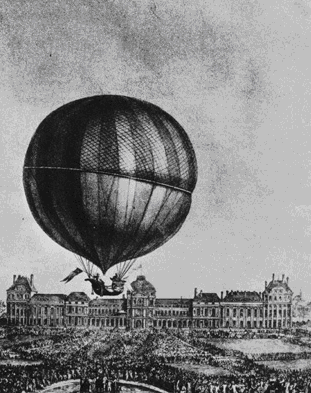
 |
|
|
HOME LATEST NEWS - BOOKS YOU CAN READ ONLINE EDITORIALS AVIATION HISTORY |
|---|
|
Jacques Charles invented the hydrogen balloon. The French chemist, physicist, and aeronaut Jacques Alexandre César Charles, was born November 12, 1746, in Beaugency, Loiret, France. Beginning as a clerk in the finance ministry, Charles turned to science and experimented with electricity. He developed several inventions, including a hydrometer and reflecting goniometer, and improved the Gravesand heliostat and Fahrenheit's aerometer. He is best known for his formulation in 1787 of one of the basic gas laws, known as Charles's law, which states that, at constant pressure, the volume occupied by a fixed weight of gas is directly proportional to the absolute temperature. However, during his lifetime, Charles was better known for inventing the hydrogen balloon.
Jacques Charles and Ain‚ Roberts ascended over Paris in a
hydrogen-filled La Charli're on December 1, 1783. Upon landing outside of Paris, it was destroyed by terrified peasants. On December 1, 1783, he, along with Ainé Roberts, ascended to a height of 1,800 feet (549 meters) in the newly constructed La Charlière. He was elected to the French Académie des Sciences in 1785. Charles died on. April 7, 1823, in Paris. |
 |
||
|
Jacques Alexandre César Charles |
|||
 |
|||
|
Credits - © 2001 National Air
and Space Museum, |
|
©AvStop Online Magazine Contact Us Home |